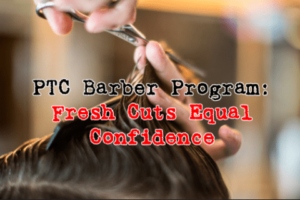Pickens Technical College Esthetician Pathway: Could Dry Flotation Disrupt the Industry?
As a budding esthetician possibly attending the Pickens Technical College Esthetician course next fall, you’ll learn about what ingredients to add to your various beauty and skin products to make your customers feel like they’re glowing again. Pickens’ Esthetician course, taught by Yong Keffer, is constantly updating its curriculum to teach cutting-edge skin restoration techniques and treatments for problematic skin types and new methods of exfoliation treatments, aromatherapy, and more. While a large portion of this course will focus on professional make-up techniques and skills, providing people with a full-body relaxation and rejuvenation experience is a central focus.
A new service starting to appear in spas throughout the United States today is called dry floatation, a way for customers to get the benefits of a float tank (such as profound relaxation, calming sensations, toxin removal, etc.) without getting wet. How does it work, and could this new service disrupt the field you’ll enter after Pickens?
What Is Dry Floatation?
Typical float therapy uses water and copious amounts of Epsom salts to get the desired effect. Clients are enclosed in a float chamber with no outside stimuli, allowing them to meditate or simply rest their eyes while the warm water and bath salts rejuvenate their skin. Many people find float therapy extremely relaxing and even meditative. You’d be surprised how relaxing taking a break from the constant noise and chaos of everyday life for an hour or two can be.
Dry floatation is built on the same principles. The sense of deep relaxation and weightlessness that makes float therapy popular is replicated here, but with a larger emphasis on muscle relaxation and rejuvenation and the easing of pressure and stress on the joints.
Dry floatation beds are usually framed twin mattresses and are often temperature-controlled, providing a cozy, warm sensation when you lie down. Usually, they have blankets and pillows as well. Below the mattress is a large bag that fills with water. The mattress is secured with ropes over the frame and the water bag, so users are both floating and hanging. One recent dry floatation user said it’s like a hammock and a waterbed had a baby. This creates a pure weightlessness effect that few have experienced. Unlike floating on a river or a pool, you’re not moving and you’re not subject to currents, ripples, or splashes.
Will Dry Floatation Take Off?
It’s hard to say. Like massages, traditional float therapy, and other skin and beauty services, dry floatation is available in malls as well as private spas. Their popularity is already rising from confusion about the service itself to being offered in many different places. The appeal is easy to see, and it’s already popular with people who like float tanks but don’t want to deal with wet skin. Dry floatation offers people a faster, less messy experience while still providing all the benefits of traditional float tanks. Expect to see them in the esthetician world more and more.
